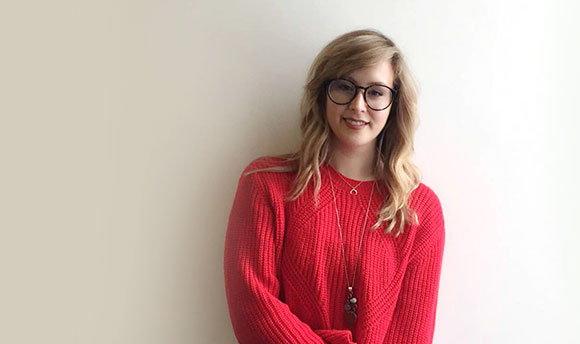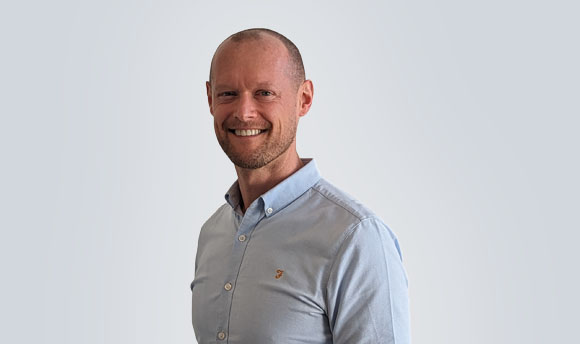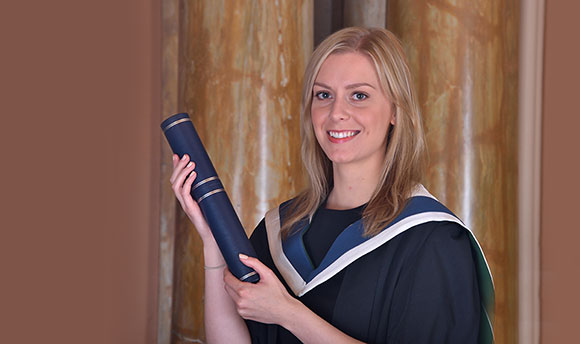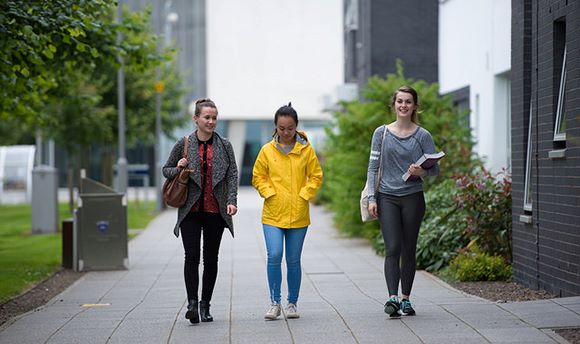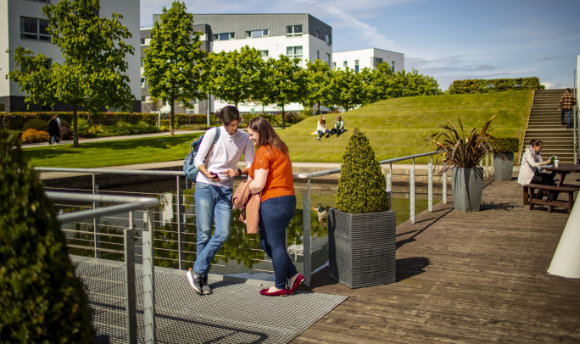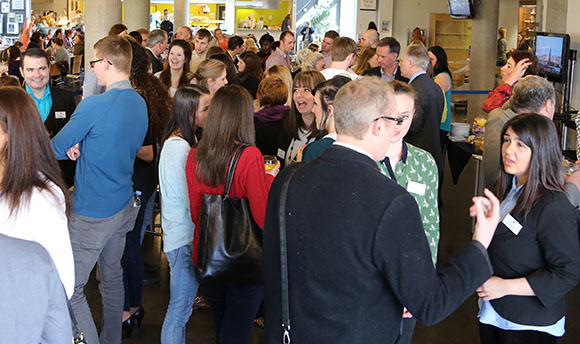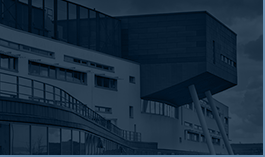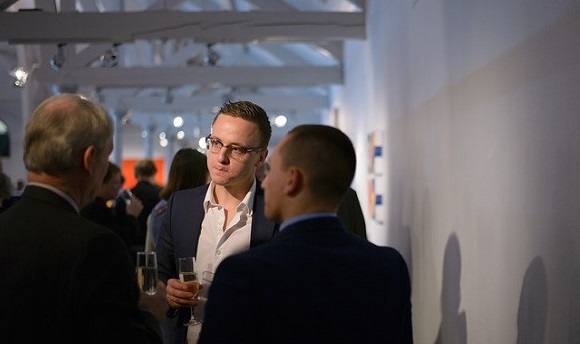Diagnostic Radiography (Pre-Registration) - MSc
If you have a degree and are looking for a career change into a caring profession with excellent employment rates, why not consider becoming a diagnostic radiographer?
This MSc in Diagnostic Radiography (Pre-Registration) course will enable graduates to refocus their career in only two years. On completion of the course, you will be able to apply for registration with the Health & Care Professions Council (HCPC) to work as a diagnostic radiographer.
You will develop the analytical, theoretical and practical skills you learned on your undergraduate degree and focus on the professional and clinical elements required to be a successful diagnostic radiographer. The course includes three blocks of practice placement that will build on course modules providing theoretical knowledge, ensuring you are well-equipped to enter into this caring profession.
This course is not suitable for those already holding a degree in diagnostic radiography. If you do already hold a degree in diagnostic radiography, you may wish to consider our Advancing Professional Practice Framework instead.
Why QMU?
- Our reputation: Diagnostic radiography education at QMU is well established, extremely popular, and well respected throughout the profession. Our graduates are highly praised by employers.
- Employability: This course has an excellent graduate employment rate and all graduates since the course began have found employment within the profession.
- Placements give you the optimum experience: The course provides the luxury of a variety of clinical placements throughout central Scotland, producing flexible graduates.
- Support and opportunity: Small class sizes ensure high academic support and a unique clinical experience.
- Professional accreditation/registration: Successful completion will enable application for registration with the Health & Care Professions Council (HCPC), a requirement for employment in the NHS.
What does a diagnostic radiographer do?
Diagnostic radiographers provide imaging services within healthcare settings including accident and emergency, outpatients, operating theatres and wards. X-rays are an imaging technique used by diagnostic radiographers to visualise injuries or disease, or monitor changes inside the body. Diagnostic radiographers also carry out specialist imaging, which may include cross-sectional imaging techniques such as computed tomography (CT), magnetic resonance imaging (MRI), radionuclide imaging (RNI) and positron emission tomography (PET). Radiographers also carry our ultrasound imaging, but this requires further study once registered as a radiographer.
As a student on this course, you will complete a number of modules that integrate anatomy, physiology, radiodiagnostic imaging, physics and equipment, enabling you to understand the theory of diagnostic imaging. This theory will be put into practice in clinical simulation workshops in our on site radiography suite, enabling you to experience the role of a diagnostic radiographer, including communication with teams and with service users, before placement blocks. In the second year of your studies, you will also be required to complete a research project dissertation.
Structure and exit awards
You must complete the full MSc (180 credits at SCQF level 11 and 80 credits at SCQF level 10) to be eligible to register with the Health & Care Professions Council and to work as a Diagnostic Radiographer. Single module study is not available.
Teaching, learning and assessment
Academic study is learner-centered with the analysis and synthesis of knowledge being of paramount importance. You will be expected to take overall responsibility for your learning. Teaching methods include keynote lectures, clinical workshops and tutorials, student-led seminars, group discussions, peer review, clinical observation and practice. Directed learning materials will be delivered via a virtual learning environment (Canvas) and comprise reading, self-assessment quizzes, workbooks, tutorial questions with answers and narrated lectures.
Clinical skills will be developed in work placements in radiology departments in hospitals in central Scotland.
A variety of assessment methods will be used, including online examinations, Objective Structured Clinical Examinations (OSCEs), self-appraisal, course work, ePortfolio, viva voce examinations and clinical assessment.
Placements
There are 16 weeks of placement in Year One and 20 weeks in Year Two, including a three-week elective placement. QMU will allocate students placement across central Scotland, for example, the Lothians, Fife, Forth Valley, Ayrshire, Tayside and the Borders. However, for three of these weeks you will be on elective placement, which can be taken anywhere in the world. Students choose, arrange and fund this placement block, but QMU can assist with any documentation that may be required.
Please note that there are additional costs associated with placements. Please see the ‘Other fees’ section under the ‘Entry requirements’ tab for more details.
Specialist facilities
QMU offers a variety of modern spaces for use by both our Master of Radiography: Diagnostic (MRad) and MSc Diagnostic Radiography (Pre-Registration) courses. We have a dedicated Diagnostic Radiography Room to practice technical and professional skills, with fully functioning clinical grade x-ray equipment. Our diagnostic radiography students also utilise QMU's Clinical Simulation Suite, and Physiotherapy and Podiatry Skills Rooms which are equipped to simulate the real-life placement environment. Students have access to numerous anatomy models which are incorporated into their learning during practical sessions and can be used during self-directed study sessions.
Teaching hours and attendance
Each module that you study will require you to attend classes and carry out independent work. The pattern of attendance at QMU will depend on the modules you are studying. The programme leader and timetable coordinator work together with the QMU International Office to ensure that staff to student contact time complies with current UKVI regulations for international students'
Attendance at professional modules is monitored to ensure safety to work in the clinical environment. In clinical placements the normal hours of a radiographer (ie full time, Monday to Sunday) will be followed.
Class sizes
The cohort is normally 15-20 students to ensure that the clinical experience can be tailored to individual needs. Some academic modules have larger class sizes as students engage with other allied health professionals.
Teaching staff
You can read more about the teaching staff on this course at the bottom of this page. Please note that teaching staff is subject to change.
You will study the following modules:
- Diagnostic Imaging of the Musculoskeletal System and the Chest (20 credits): The aim of this module is to develop a critical understanding of the relationships between the structures and functions of the musculoskeletal system and the chest and the associated imaging procedures and the principles of radiodiagnostic radiation safety.
- Diagnostic Imaging of the Axial Skeleton, Abdomen and Dentition (20 credits): The aim of this module is to develop a critical understanding of the relationships between the structures and functions of the axial skeleton, abdomen, and dental anatomy, as well as associated imaging procedures and the principles of radiodiagnostic radiation safety.
- Radiodiagnostic Physics, Equipment and Technology (20 credits): The aim of this module is to develop your critical understanding of radiodiagnostic physics and the design, operation and capabilities of diagnostic imaging equipment and technology required for safe and effective operation.
- Principles of Gastrointestinal and Hepatobiliary Imaging (20 credits): The aim of this module is to develop your knowledge of the principles of gastrointestinal and hepatobiliary imaging.
- Preparing for Professional Practice (20 credits): The aim of this module is to explore factors that shape and influence the provision of health and social care by the allied health professions
- Applied Research Methods (20 credits): The aim of this module is to support you to demonstrate an in-depth and critical understanding of research processes and develop skills to effectively address a practice or knowledge-based problem.
- Diagnostic Radiography Practice-based Learning: Placement 1 (Non-credit bearing): This module aims to enable successful integration into the multidisciplinary team and development of a holistic, safe and effective approach to conventional diagnostic imaging.
- Principles of Neurological, Cardiovascular, Respiratory and Urinary Imaging (20 credits): The aim of this module is to critically appraise the role of the radiographer and various imaging modalities in Principles of Neurological, Cardiovascular, Respiratory and Urinary Imaging
- Principles of Emergency and Forensic Imaging (20 credits): The aim of this module is to critically appraise the role of the radiographer and various imaging modalities in emergency and forensic imaging pathways.
- Principles of Reproductive, Mammographic and Arthrographic Imaging (20 credits): The aim of this module is to develop your knowledge of the principles of reproductive, mammographic and arthrographic imaging.
- Entrepreneurship and Leadership for Professional Practice (20 credits): The aims of this module are to evaluate and apply concepts of leadership and leading change, intra/entrepreneurship and innovation within healthcare/community and explore opportunities for leading and developing enterprising ideas for health and wellbeing.
- Professional Development for Health Practice (20 credits): This module aims to provide you with the opportunity to engage in a range of professional development activities that will enhance your potential to contribute to the delivery of contemporary health and social care. Through co-production and lifelong learning strategies, you will prepare for evolving healthcare challenges beyond graduation.
- Dissertation (40 credits): The aim of this module is to enable you to develop and apply skills of research and enquiry to produce an evidence-informed piece of work that contributes to a subject, field or profession.
- Diagnostic Radiography Practice-based Learning: Placement 2 (Non-credit bearing): This module aims to develop further the knowledge, skills and professional attributes required of an entry level diagnostic radiographer.
Diagnostic radiography is a fast-moving and continually changing profession, and long-term career prospects may include specialisation, management, research and teaching. Following graduation and registration with the HCPC you can work as a registered diagnostic radiographer within the NHS.
Entry requirements
Second class honours degree or above in any discipline. It is essential that all applicants have some shadowing experience in a clinical environment. This course is not suitable for those already holding a diagnostic radiography or medical qualification.
International students: You will be required to provide evidence of English language competence at no less than IELTS 7.0 with no individual component score less than 6.5. This is at required level for HCPC registration.
Other requirements
A satisfactory criminal records check from the Protection of Vulnerable Groups (PVG) Scheme, an occupational health check and personal indemnity insurance (normally through membership of the professional body) are required.
Other information
- The cost of professional indemnity insurance is the responsibility of the student. For more information on this, visit the PG 2026 fees page on our website.
- The additional costs associated with placement travel and accommodation are the responsibility of the student. Students who receive SAAS funding may be able to claim for some of these expenses to be reimbursed.
- Uniform, PVG and badge costs – please see PG 2026 fees page on our website.
Disability/health conditions
If you have a disability, long-term physical or mental health condition, or learning disability, it should not stand in the way of your studying at QMU. However, if you are not sure whether your disability might be a barrier in your studies or in relation to the professional standards, please contact the disability service who will be able to have a conversation with you about reasonable adjustments and supports available to you.
Applying for this course
For more information on applying, or to apply for this course, please follow the links in the 'Start your application' box at the top right of this page.
Application deadline
The course accepts applications throughout the year, and normally the deadline for home applicants is mid-August, while the deadline for international students will typically be the end of June.
The course will close earlier if course is filled therefore we recommend applying as early as possible.
Contact Stuart Williamson (Programme Leader) or Contact Admissions
- The delivery of this course is subject to the terms and conditions set out in our 2026/27 Entry - Terms and Conditions (Postgraduate).
- The information on this page is correct at the time of posting (October 2025) but is subject to change. In the event that modules change, QMU will seek to use reasonable endeavours to ensure that there is no detrimental impact on students. Please keep an eye on this page for updates.
Specialist teaching and learning facilities at QMU
What are the difference between diagnostic and therapeutic radiography?
Become your best you: study at QMU
Course Overview
Useful Links
Join us at one of our Postgraduate Open Events
Find out about online and in-person opportunities to meet with us to find out more about our postgraduate courses and study at QMU.
Postgraduate Open Events - More Info and BookingsCourses You Might Also Like
- MSc Art Psychotherapy
- MSc Audiology (Pre-Registration)
- MSc Dietetics (Pre-Registration)
- MSc Dramatherapy
- MSc Music Therapy
- MSc Occupational Therapy (Pre-Registration)
- MSc Physiotherapy (Pre-Registration)
- MSc Play Therapy
- MSc Podiatry (Pre-Registration)
- MSc Speech and Language Therapy (Pre-Registration)
